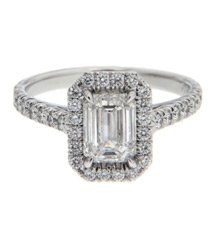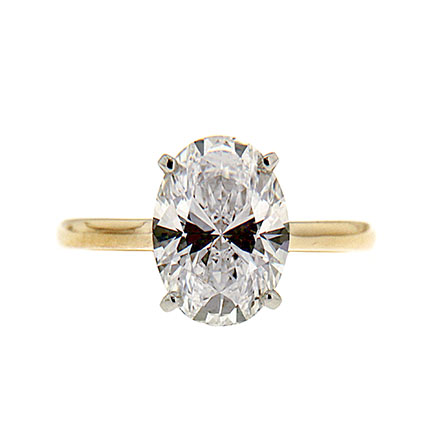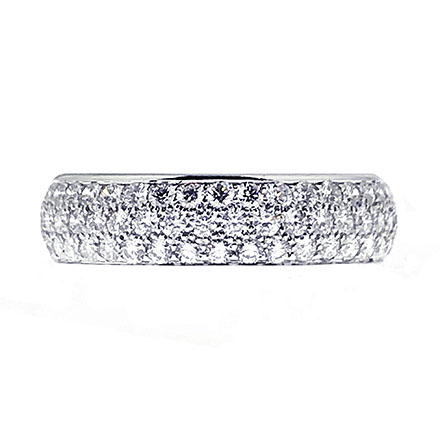In diamond rings, jewels are the center of attention. The band the diamonds rest upon is admired for its gleam and design. Prongs are a popular setting connecting gems to rings. There are several variations of prongs, each serving a slightly different purpose.
At their simplest, prongs are small pieces of metal which rise from the band to grip the gem. They often resemble a thick wire with a blunt end. Sometimes the tip is pointed for decoration and called a claw setting. Prongs may be clustered in groups of two for visual interest. V-shaped versions help protect fragile diamond corners and points. The tiniest prongs secure minuscule diamonds without distracting from the jewel.
Solitaire diamond engagement rings are prized for simple elegance. Classic versions feature a single prong set jewel. The earliest versions had six prongs holding the diamond in place. Today four prong rings are also used for the style. Both kinds allow additional light to travel through the jewel.
Trellis rings combine prongs with embellishments. Rather than stopping where they meet the band, trellis prongs extend along the outside of the ring. They curve past one another, creating raised designs resembling a mix between Us and Xs. Trellises are attractive in both solitaires and three stone diamond bands.
Pave settings encrust the ring in diamonds. There are two ways to create the prongs for this mount. The first is to incorporate them into the band’s mold. The second is to carve the prongs by hand, raising tiny beads from the shank.
Common prongs appear in diamond eternity bands and other rings where diamonds are set in rows. Rather than give each stone its own setting, common prongs secure gems on either side of them. For jewel enthusiasts, this keeps the metal discrete and puts more focus on the diamonds.







